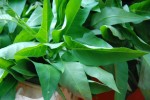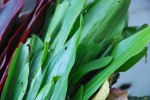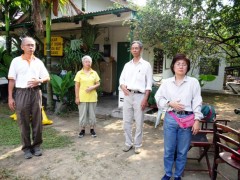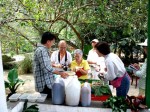Aug 19, 2010
Natural Flowering Enhancers
We use what's in the farm to make our own flowering enhancers. Our dragon fruits never stop flowering and producing fruits. Our durians can be fruiting two to three weeks before others.
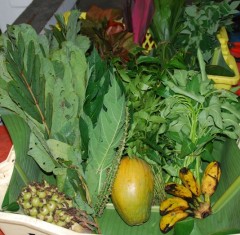



papaya 2.5
banana 2.5
Red Leaves 1.0
Kangkung young leaves 1.0
Acasia young leaves 1.0
Molasses 2.0
Quarry dust sprinkle
Put in a container until half full (or half empty, whichever). Leave for up to 60 days, covered loosely, before proceeding.
There are a few variations to use the above (which we shall call the Mother). One way is as follows:
Dilute adding 1 part filtered Mother, 1 part molasses to 20 parts water to make a Concentrate. Let the Concentrate sit for up to 7 days before diluting further required amount to use. Add one part Concentrate, one part molasses and 50 parts water for Spraying Dilution. It goes without saying you must always use unchlorinated water.
Do not spray direct from Concentrate on plants. They may wilt. Always spray diluted. Not recommended for ornamentals.
If you are using compost tea, add one part filtered Mother to 20 parts tea, and spray. Use only on fruit trees (including pitaya).
Email me direct if you encounter problems.
Notes:
1. You can find the acacia tree being grown along highways. You can use the young leaves from young trees. Acacia is an invasive, so don't plant it in your farm unless you have the patience to continually weed out the young trees.
2. Any red leaves will do.
17:45 Posted in Bio Nutrients | Permalink | Comments (6) | Tags: nature farming, organic farming, qi, qi farming, flowering enhancers, penggalak bunga
Jun 22, 2009
Workshop on Nature Q-Farming
We had a workshop on making bio nutrients and basics of Nature Q Farming on June 20th 2009. The workshop is meant for home food growers and not for commercial farmers. The objectives are to 1) introduce market gardening to urban dwellers to reduce the hold of commercial farmers over our lives, 2) to empower urban dwellers to take back some of the responsibility of producing healthy food for our children, and 3) to allow urban dwellers to have a source of income to offset increasing costs of living in the cities.
Participants were 'aligned' to the energy in the environment and taught how to harness the energy that is present, to enhance the energy and to incorporate the energy into the plants and vegetables that they are growing. By so doing, they give to the plants a part of their energy and in return the plants and microbes will multiply it many fold for them.

The field of energy around us.
Read 'The Field' by Lynne McTaggart.
For the first time, these 'die-hard' organic gardeners felt a living connection with the plants that they have been growing for years. We become a part of the plants and they become a part of us, in this cycle of passing of nutrients and living energy between one living organism to another; we are no longer 'eating' a plant instead we are sharing and exchanging living energy.
I can still remember the wonder on the face of one of the participants when he felt the microbes releasing energy at him. And I remember also the remark of another participant that he was wondering why he did not start panting after a fairly vigorous walk to some wild bamboo groves and back, as he was a heart patient.
An important part of Nature Q Farming is working with the plants and herbs and microbes that is in the environment.
Making brews of various friendly microbes to be used as intermediaries between us and the plants that we are growing.
18:11 Posted in Bio Nutrients | Permalink | Comments (5) | Tags: nature farming, organic farming, qi, qi farming








